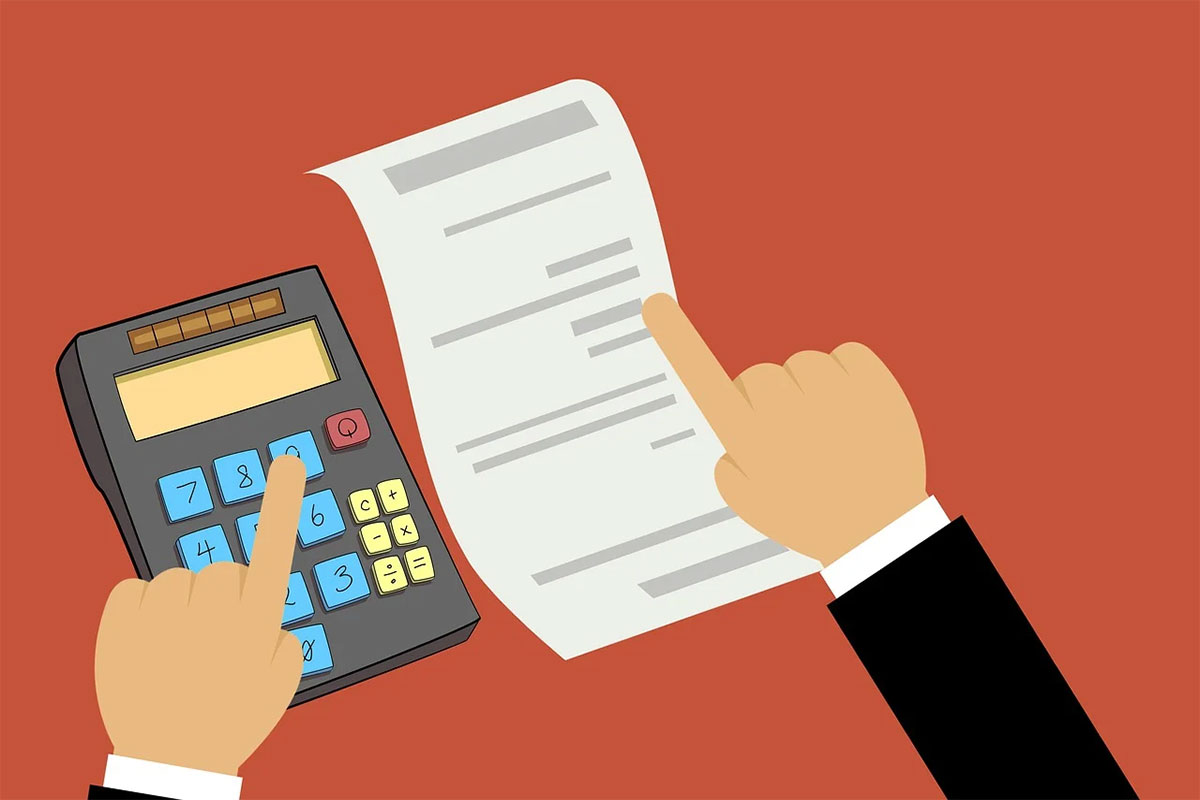You might be wondering if you can use a credit card instead of cash to pay federal taxes. This can be a convenient option as it offers additional benefits that cash payment does not provide.

By using a rewards credit card for a large transaction like paying federal taxes, you have the potential to earn cash back or travel rewards. Furthermore, this payment method might also give you the opportunity to earn a welcome bonus or take advantage of an introductory 0% interest rate. These benefits can provide you with the flexibility to pay off your tax bill gradually, making it more manageable. However, it is important to consider your individual circumstances before deciding whether to pay taxes with a credit card. In this article, we will delve into the details of how to pay taxes with a credit card and help you evaluate if it is a wise choice for your specific situation.
How to pay federal taxes with a credit card
You have the option to conveniently use a credit card as a method of payment for federal personal and business taxes, as well as certain state and property taxes. This provides you with flexibility and ease in managing your tax obligations. Although the IRS doesn’t directly accept credit card payments, there are trusted intermediaries that can securely process your payment on their behalf. These reliable services enable you to make payments using major credit cards such as Visa, Mastercard, Discover, and American Express. Moreover, popular digital wallets such as PayPal and Click to Pay are also accepted, giving you even more choices for payment.
If you find it necessary, you even have the freedom to split your payment across multiple credit cards. This feature can prove advantageous in situations where your tax bill exceeds the credit limit of a single card or if you wish to take advantage of welcome bonuses offered by different credit cards, maximizing your benefits.
It is crucial to be aware of the limitations regarding the number of credit card transactions allowed for different types of tax payments and tax years. The IRS Frequency Limit Table by Type of Tax Payment provides comprehensive information on these restrictions. For instance, for the current tax due on a Form 1040, you can make up to two credit card transactions per year, unless you are enrolled in a payment plan, in which case you have the opportunity to make up to two credit card transactions per month. This ensures that you are well-informed about the guidelines when utilizing credit cards for tax payments, allowing you to plan and manage your payments effectively.
The IRS allows three payment processors to accept tax payments, which can be done online or by phone. The authorized processors are payUSAtax (844-729-8298), Pay1040 (888-729-1040), and ACI Payments, Inc. (800-272-9829). Each service charges fees that amount to less than 2% of the transaction. Alternatively, you can use a third-party service like Plastiq, but be aware that they may charge a fee of up to 2.9%.
Fees for paying federal taxes with a credit card
Each approved payment processor authorized by the Internal Revenue Service (IRS) imposes a fee for processing credit card transactions. The good news for businesses is that these fees are tax deductible when used for business purposes. Here are the details of what you will be charged:
- payUSAtax: 1.85% (with a minimum fee of $2.69).
- Pay1040: 1.87% (with a minimum fee of $2.50).
- ACI Payments, Inc.: 1.98% (with a minimum fee of $2.50).
If you decide to pay your taxes using a credit card but find yourself unable to pay the full amount by the due date, you will be subject to interest charges on the remaining balance. This is an important consideration as it may not be a prudent decision to charge a significant expense to your credit card. If you are contemplating the use of a credit card for tax payment solely due to a lack of funds, it is essential to be aware that you could potentially end up paying hundreds of dollars per month in interest charges.
For individuals who are unable to pay their tax bill on time, the IRS provides the option of monthly payment plans. These plans currently accrue interest at a rate of 7%, in addition to possible penalties and fees. This interest rate is much more reasonable compared to the rates imposed by rewards credit cards, which often exceed 20%. As an example, the Chase Sapphire Preferred Card has a variable annual percentage rate (APR) ranging from 21.49% to 28.49%.
Alternatively, another potential solution to repay the IRS could be obtaining a personal loan with a reasonable interest rate. By doing so, you would owe the money to the bank instead of the government, potentially providing more flexibility and manageable repayment terms.
Paying federal taxes with a credit card and credit score
Using a credit card to pay the IRS can have an impact on your credit utilization ratio. Credit utilization refers to the percentage of available credit that you are currently using, both on a per credit card basis and overall. According to Experian, one of the major credit bureaus, maintaining a credit utilization ratio above 30% can potentially have a negative effect on your credit score.
To illustrate this, let’s consider a scenario where you have two credit cards. The first card has a credit limit of $10,000 and no outstanding balance, while the second card also has a credit limit of $10,000 but carries a balance of $4,000. In this case, your overall credit utilization would be 20% ($4,000 balance divided by $20,000 total available credit). However, the credit utilization for the second card would be 40% ($4,000 balance divided by $10,000 credit limit).
When you choose to pay your taxes using your credit card(s), it is important to note that it can potentially lead to a significant increase in your credit utilization, depending on the amount of available credit you have. Nevertheless, it’s crucial to remember that this increase is temporary. Once you pay off your credit card balances, your credit score is likely to recover quickly.
In fact, if you make a prompt payment as soon as the transaction is posted, it is unlikely to have any impact on your credit score. This is because credit card issuers typically report balances to credit bureaus on a monthly basis. By promptly settling your bill, you can prevent the credit bureaus from being aware of any high balances you may have had.
Why should I pay federal taxes with a credit card?
Earning a welcome bonus
Credit card welcome bonuses are a convenient and efficient method to swiftly accumulate a considerable amount of cash back or travel rewards. It is worth noting, however, that a considerable number of individuals encounter difficulties when attempting to meet the minimum spending requirement necessary to earn these bonuses. To illustrate, let’s take a look at the Ink Business Preferred Credit Card, which offers an impressive 100,000 bonus points to cardholders who are able to spend $8,000 on purchases within the first three months of opening the account. Undoubtedly, this spending requirement can pose a significant challenge for many. Nevertheless, there is an innovative approach that can make achieving this spending requirement, as well as multiple spending requirements, considerably more attainable. By utilizing your tax bill to fulfill the spending requirement, you can effectively streamline the process and significantly increase your chances of success.
Earning credit card incentives
Some credit cards provide rewards based on the amount of money you spend in a given calendar year. These rewards can vary depending on the credit card and the specific spending thresholds.
For example, The World of Hyatt Credit Card* offers a complimentary night certificate at Category 1-4 Hyatt hotels each calendar year if you spend a minimum of $15,000. This certificate can be quite valuable, as it allows you to enjoy a free night’s stay at select Hyatt properties. The actual value of this certificate can vary depending on the specific property where it is redeemed, but it is often worth several hundred dollars. This can be a great way to enhance your travel experiences and make the most of your credit card spending.
Remember, it’s important to carefully review the terms and conditions of any credit card rewards program to fully understand the requirements and benefits.
Earning cash-back rewards
When using a credit card to pay taxes, there is a fixed charge of at least 1.85%. However, if the rewards you earn from the credit card exceed this amount, it may still be beneficial. Let’s take a closer look at one cash-back credit card, the Citi Double Cash Card, which offers a 2% cash back on all purchases. With this card, you can earn 1% cash back when you make a purchase and an additional 1% when you pay for those purchases. By simply making at least the minimum payment on time, you can start earning cash back. Moreover, for a limited time, there is an exciting opportunity to earn 5% cash back on hotel, car rentals, and attractions booked through the Citi Travel℠ portal until 12/31/24. This means that, taking into account the 1.85% processing fee, using a card like the Citi Double Cash Card would result in a net return of 0.15%, which is definitely better than receiving no rewards at all.
0% intro APR
If you are unable to pay your tax bill at the moment but expect to have the means to do so within the next 12 to 21 months, there is a potential solution to consider. One option is to apply for a credit card that offers a 0% introductory APR on purchases. By obtaining this type of credit card, you will still need to make the minimum monthly payment, but the entire payment will go towards reducing the amount you owe.
An example of a credit card that provides this benefit is the Wells Fargo Reflect Card. With this card, you can enjoy a 0% introductory APR for a generous period of 21 months, not only on purchases but also on qualifying balance transfers. After the introductory period ends, the APR will vary and be set at either 18.24%, 24.74%, or 29.99%. It’s worth noting that if you make a balance transfer within 120 days of opening the account, it will also qualify for the introductory rate. This extended interest-free period can greatly help you make progress in paying off your tax bill.
However, there are a couple of important factors to consider:
- The approved credit limit may not cover your entire tax bill. It’s crucial to assess whether the offered credit limit will be sufficient for your needs.
- If you are unable to fully pay off the credit card balance before the promotional period ends, you will face high interest charges on the remaining balance. It’s important to have a solid plan in place to ensure you can pay off the balance within the specified time period.
If you have any doubts about your ability to pay off your taxes before the introductory APR period ends, it may be wise to explore alternative options.









